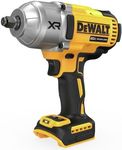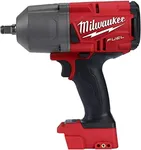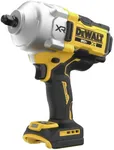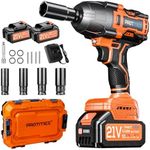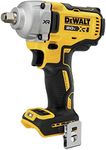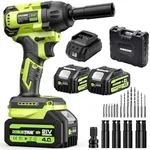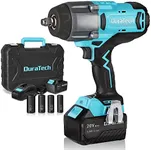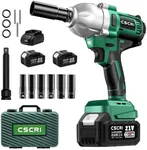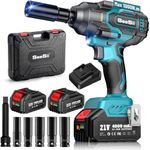Buying Guide for the Best Cordless Impact Wrench For Lug Nut
Choosing the right cordless impact wrench for lug nuts can make your automotive tasks much easier and more efficient. The key is to understand the various specifications and how they relate to your specific needs. By focusing on the right features, you can ensure that you get a tool that is powerful, reliable, and suited to your tasks.TorqueTorque is the rotational force that the impact wrench can apply to a lug nut. This is crucial because it determines how easily the tool can loosen or tighten lug nuts. Torque is measured in foot-pounds (ft-lbs). For light-duty tasks, a torque of around 100-200 ft-lbs may suffice. For most automotive lug nuts, a mid-range torque of 200-400 ft-lbs is ideal. For heavy-duty applications, such as large trucks or industrial use, you might need a torque of 400 ft-lbs or more. Choose a torque level based on the type of vehicles you will be working on.
Battery VoltageBattery voltage indicates the power capacity of the cordless impact wrench. Higher voltage typically means more power and longer run time. Common voltages are 12V, 18V, and 20V. A 12V impact wrench is lighter and suitable for light-duty tasks. An 18V or 20V wrench offers more power and is better for regular automotive work, including lug nuts. Consider the frequency and intensity of your tasks to decide the appropriate voltage.
Battery Capacity (Ah)Battery capacity, measured in ampere-hours (Ah), determines how long the battery will last on a single charge. A higher Ah rating means longer battery life. For occasional use, a 2.0 Ah battery might be sufficient. For more frequent or prolonged use, consider a 4.0 Ah or higher battery. If you plan to use the tool extensively, a higher capacity battery will reduce the need for frequent recharging.
Speed (RPM)Speed, measured in revolutions per minute (RPM), indicates how fast the impact wrench can rotate. Higher speeds can make the job quicker, but too much speed without control can lead to over-tightening or stripping of lug nuts. For most automotive tasks, a speed range of 0-2,500 RPM is adequate. Look for a model with variable speed settings to give you more control over different tasks.
Impacts Per Minute (IPM)Impacts per minute (IPM) measures how many times the hammer mechanism strikes per minute. Higher IPM can help in loosening stubborn lug nuts more effectively. For general automotive use, an IPM range of 2,000-3,000 is usually sufficient. If you often deal with very tight or rusted lug nuts, a higher IPM can be beneficial.
WeightThe weight of the impact wrench affects how comfortable it is to use, especially for extended periods. Lighter models (around 3-5 pounds) are easier to handle and reduce fatigue, making them suitable for occasional use or lighter tasks. Heavier models (6 pounds and above) might offer more power but can be tiring to use for long durations. Consider your physical strength and the duration of use when choosing the weight.
ErgonomicsErgonomics refers to how comfortable and user-friendly the impact wrench is. Features like a comfortable grip, balanced weight distribution, and easy-to-reach controls can make a big difference in usability. If you plan to use the tool frequently, look for models with ergonomic designs to reduce strain and improve efficiency.
DurabilityDurability is about how well the impact wrench can withstand regular use and tough conditions. Look for models made with high-quality materials and robust construction. Features like a brushless motor can also enhance durability. If you will be using the tool in harsh environments or for heavy-duty tasks, prioritize durability to ensure a long-lasting tool.
